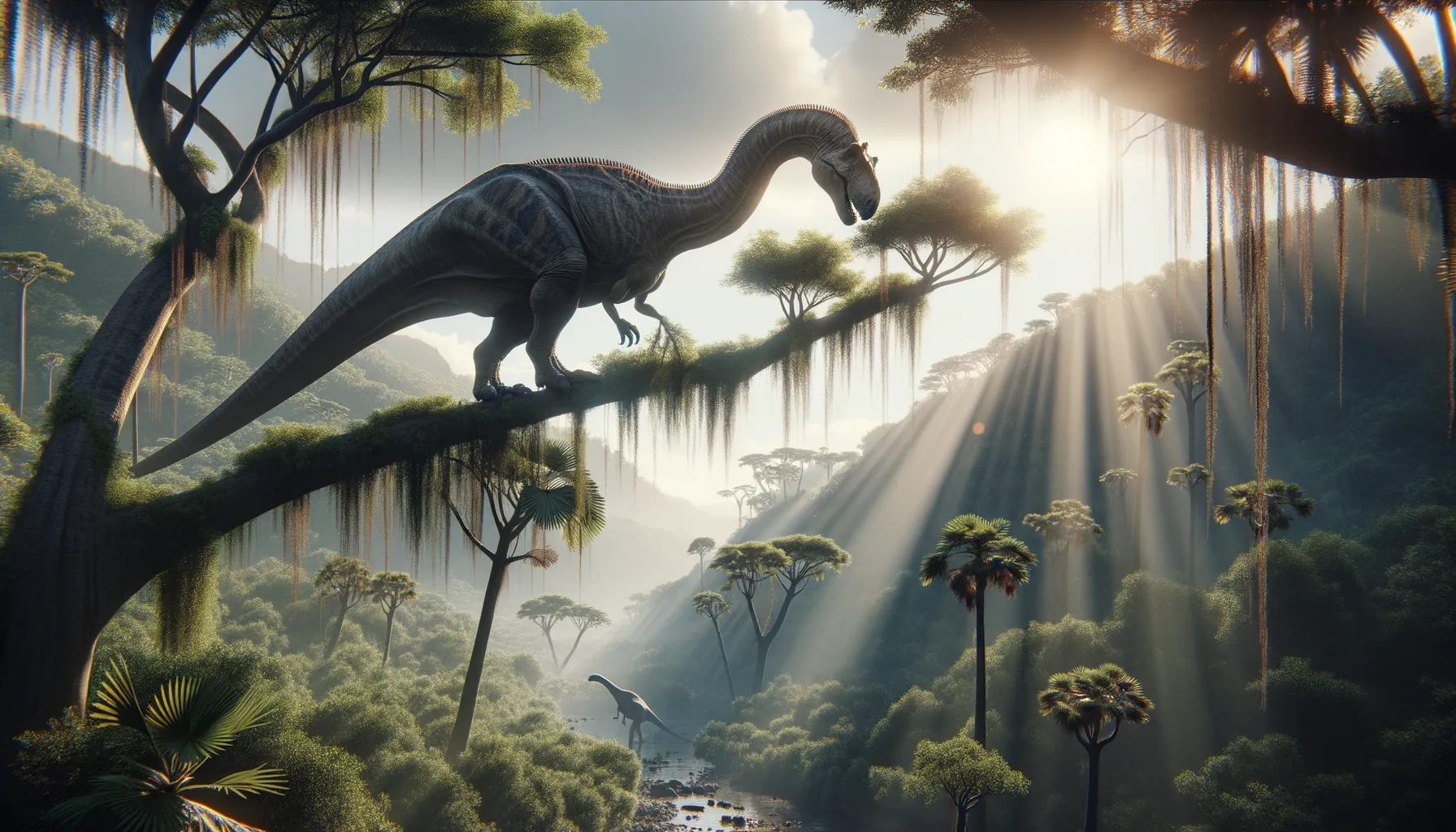
Austrosaurus
The mighty giant of ancient Australia.
Period
Cretaceous
Length
Estimated to be up to 20 meters long.
Height
Approximately 6 meters tall.
Weight
Weighed around 16 tons.
Austrosaurus was a colossal herbivorous dinosaur that roamed the land millions of years ago. As part of the sauropod family, it possessed a long neck and tail, which were ideal for foraging from trees. Residing in what is now Australia, this gentle giant is primarily known for its massive size and vegetative diet. Its discovery highlighted the diversity of prehistoric life in the Southern Hemisphere, contributing significantly to the study of dinosaurian evolution.
Diet
Austrosaurus was a herbivore. It likely fed on a variety of vegetation, using its long neck to reach high branches and plants.
Hunting
As a herbivore, Austrosaurus did not hunt. Its long neck allowed it to forage plants and trees, and it likely spent most of its time grazing.
Environmental challenges
Austrosaurus faced challenges such as changes in climate, which could affect the availability of its plant-based food. Predatory threats were also a concern, though its size likely deterred many carnivores. Habitat changes, including periods of drought or flooding, would have required adaptation for survival.
Speed
Slow-moving due to its massive size.
Lifespan
Estimated to be several decades.
First discovery
Discovered in Queensland, Australia, in 1932.
Fun Facts
- Austrosaurus was a long-necked dinosaur that lived during the Early Cretaceous period, approximately 100 million years ago.
- This dinosaur was a type of sauropod, a group known for their massive size and long necks.
- Fossils of Austrosaurus were first discovered in Queensland, Australia, in the 1930s.
- Unlike some of its more famous relatives, only a few bones of Austrosaurus have been found, making it a bit of a mystery.
- Scientists believe Austrosaurus was a plant-eater, likely feeding on the lush vegetation that existed during its time.
- The name Austrosaurus means 'Southern Lizard', which refers to its discovery in the southern hemisphere.
- Being one of the few sauropods found in Australia, Austrosaurus gives us important clues about dinosaur distribution on ancient continents.
Growth and Development
Austrosaurus hatched from eggs and grew rapidly in its early years to avoid predation. It likely took many years to reach full size, maturing at a steady pace throughout its life. This growth strategy would have helped it survive in a challenging environment.
Habitat
Austrosaurus lived in what is now Australia, in regions that were warm and lush during the Cretaceous period. It thrived in environments that offered ample vegetation. The landscape included woodlands, floodplains, and river valleys.
Interaction with other species
Austrosaurus coexisted with a variety of smaller and larger dinosaurs. Its large size meant it faced few predators, but it might have competed with other herbivores for food. It contributed to the ecological balance by helping to shape the vegetation through its feeding habits.
Natural lifespan
Austrosaurus had a natural lifespan lasting several decades.
Reproduction
Austrosaurus laid eggs, potentially in large nesting sites to increase the survival chances of the young. It likely exhibited some form of parental care, though young Austrosaurus had to rely on rapid growth for protection. The reproductive strategy would have been vital for maintaining population numbers.
Social behaviour
As a large herbivore, Austrosaurus might have lived and moved in herds, offering protection through numbers. Social behavior would have facilitated communication and coordination, especially during migration or in response to threats.
Fossil locations
Fossil remains of Austrosaurus have primarily been found in Queensland, Australia. These discoveries have provided crucial insights into its anatomy and lifestyle. The fossils demonstrate the geographic distribution of sauropods in the Southern Hemisphere during the Cretaceous period.
